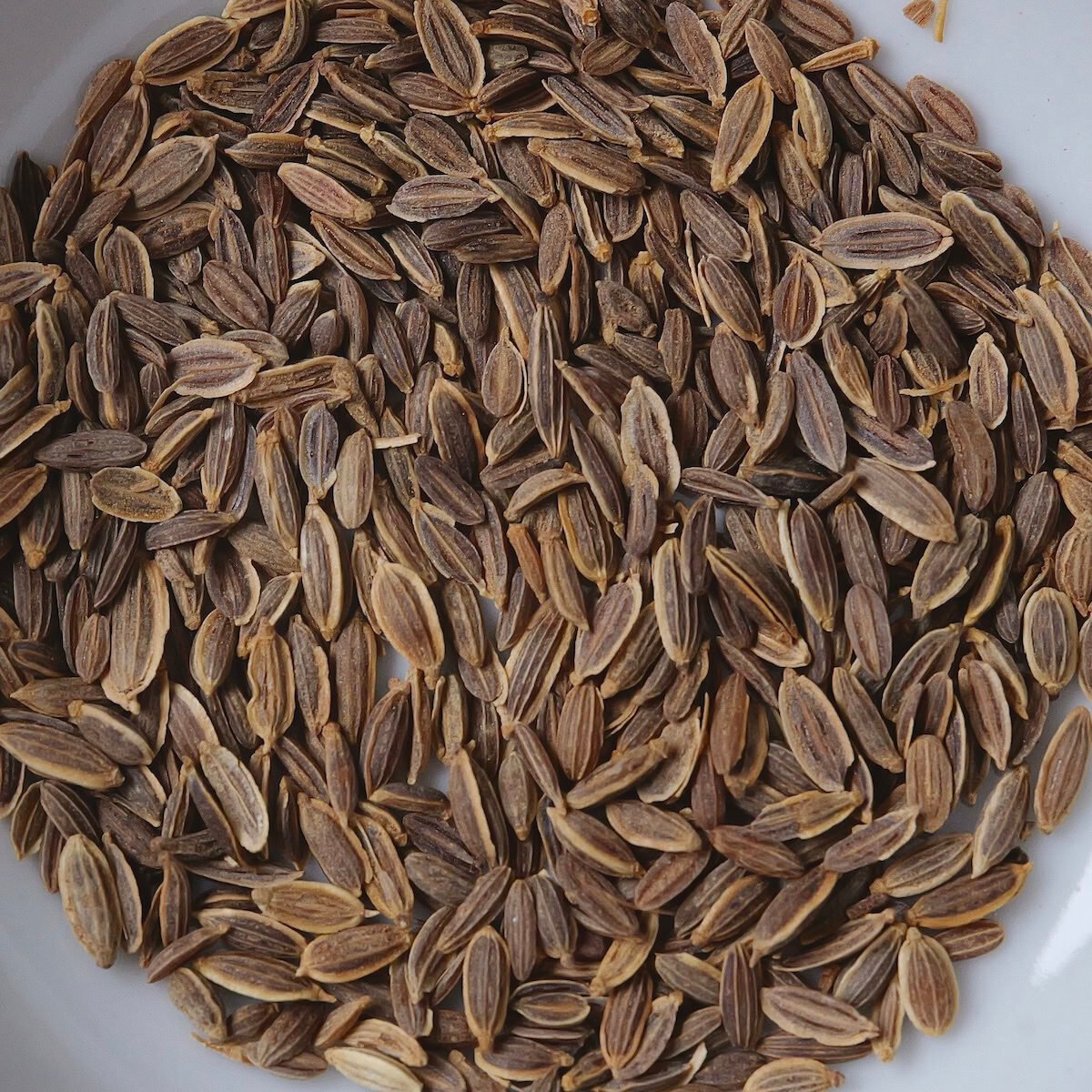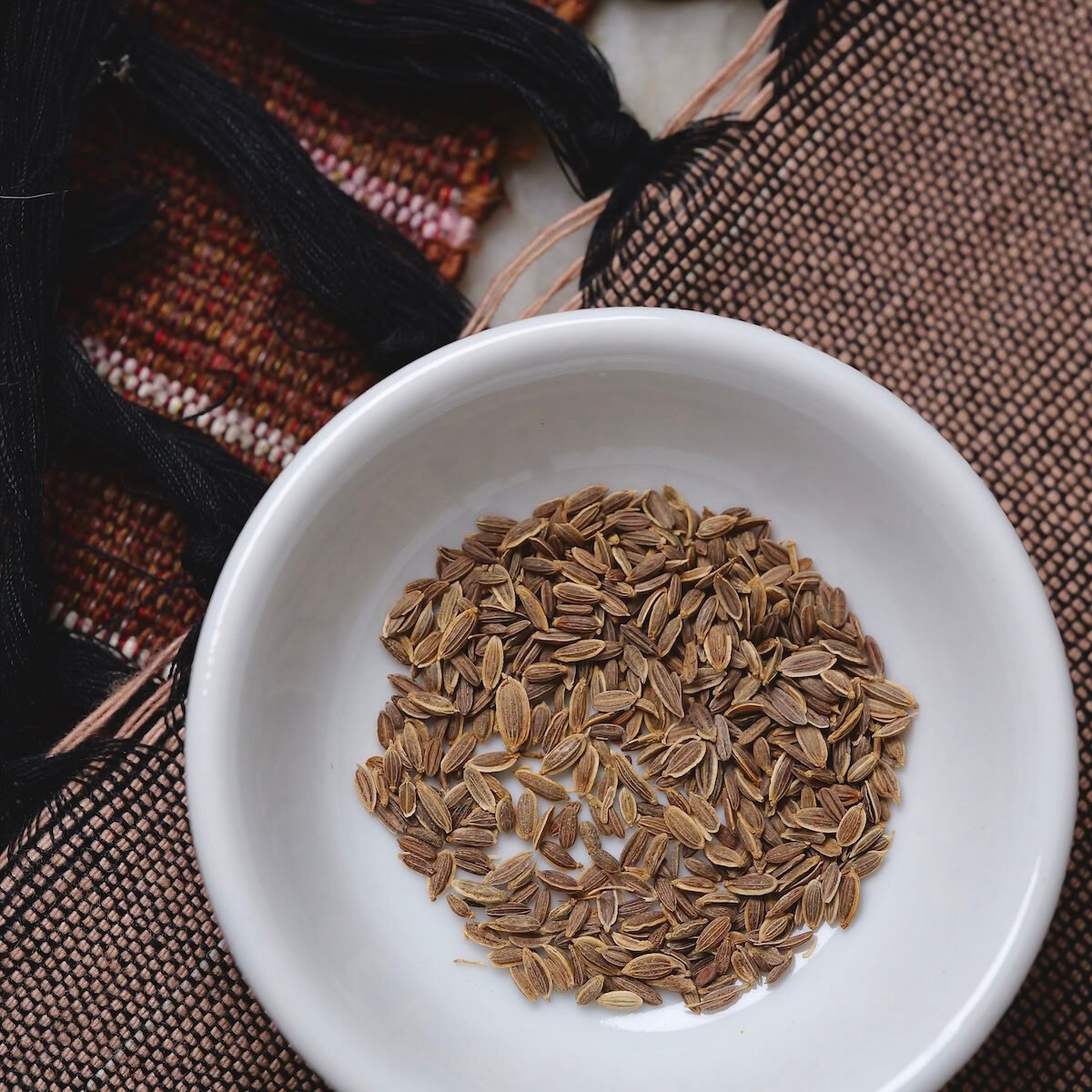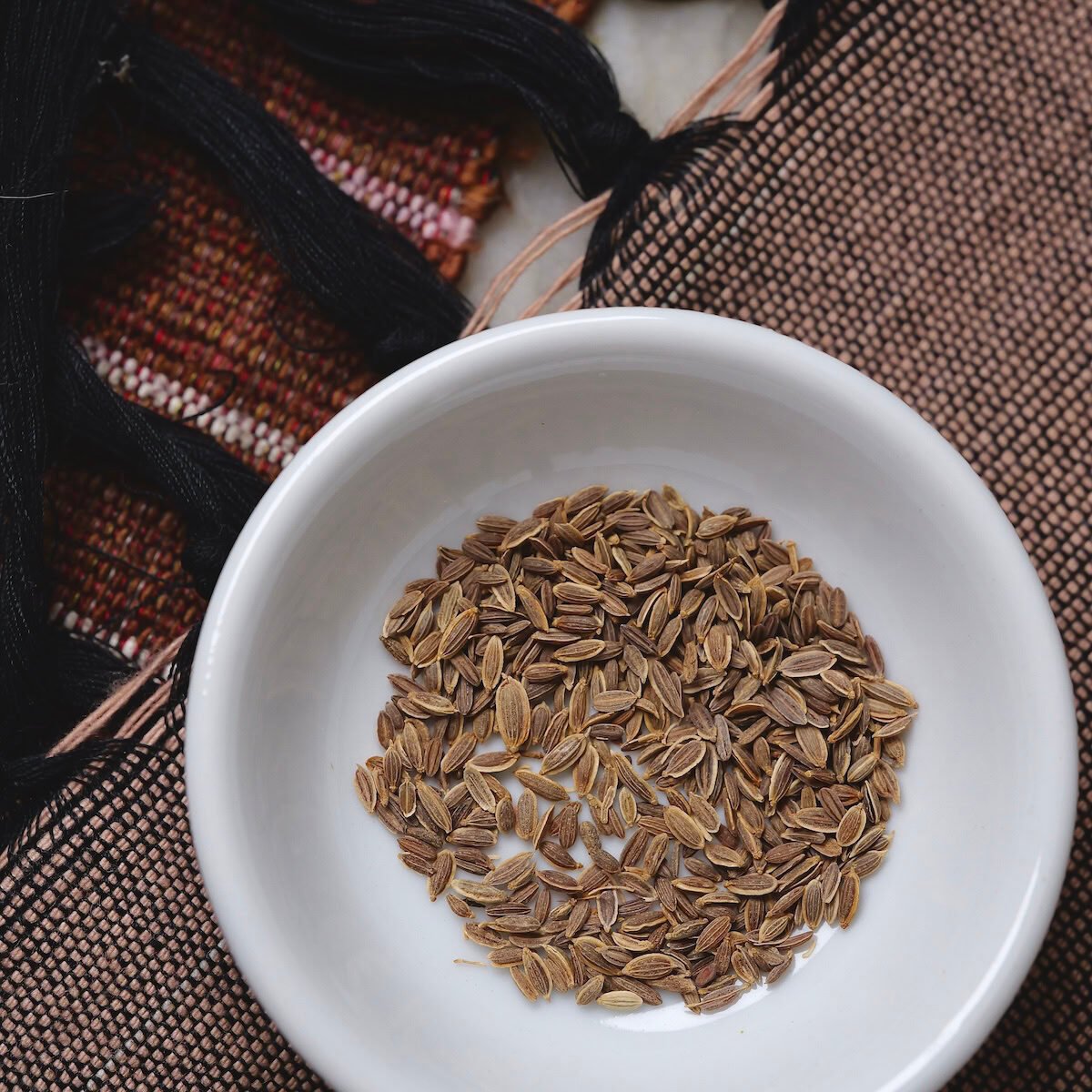Dill Seed
Dill seed is the spice produced from the tiny fruit of the dill plant (Anethum graveolens), an annual herb in the parsley family.

REGION OF ORIGIN
Dill originated in the Eastern Mediterranean and Middle East, including countries like Greece, Turkey, Egypt, and Iran. Dill seeds were even found in the tombs of Egyptian pharaohs.
PART & COLOR
Like the other “seed” spices in the parsley family (anise, caraway, coriander, cumin, and fennel seed), dill “seeds” are actually tiny fruit called schizocarps. They are flat and oval-shaped with vertical stripes, and are a light brown or tan color. The leaves of the dill plant are a popular culinary herb and its pollen is a separate spice.
HARVEST
Dill is a fast-growing annual herb that thrives in full sun and well-draining soil. Typically sown in the spring after the last frost, the fruits are harvested in the late summer or fall, usually 80-120 days after planting. They are ready for harvest when they turn brown and start to dry. Schizocarps split open when fully ripe, so the fruits must be harvested before that happens. The entire flower head is cut when it's brown and dry and hung upside down over a clean surface to catch the seeds as they dry and fall off. They can also be threshed.

FLAVOR & AROMA PROFILE
The aroma of dill seed is reminiscent of fresh dill but deeper and more complex. It doesn't have much of an aroma until crushed, when the tiny fruits release a burst of aromatic oils that fill the air. Their flavor sits between a milder anise and caraway, carrying herby and lemony notes with a light woodiness and faint bitterness. It is warm and earthy, but the kiss of citrus gives it a bright, invigorating dimension. The light bitterness adds an unexpected layer of depth. Keep in mind that Indian dill seed is more pungent than common dill.
There is something special about dill seed, a certain fresh quality that seems to evoke vivid memories. It carries with it the crispness of verdant gardens and the salty breeze of sun-drenched shores. It's a flavor that captures the essence of summer, taking you on a sensory vacation with every bite.
CULINARY USES
Dill seed is a key ingredient in pickling, its aromatics enhancing the preservation process and infusing pickles with its distinctive flavors. That's where we get the famed dill pickle. Dill seed often flavors breads, especially rye and sourdough, complementing the tangy flavor of the bread. Dill seasons soups, stews, and potato dishes in Europe and it deepens curries and vegetable dishes in India.
While primarily used in savory dishes, dill seed is surprisingly good in sweet creations as well. Its subtle sweetness and warm spice works well with the flavors of fruits like apples and pears, and it can infuse syrups, honey, or even ice cream with a unique twist. The tiny dried fruits of dill can also be lightly toasted to bring out new aromatics, then ground and sprinkled over salads, dips, and creamy dressings.



